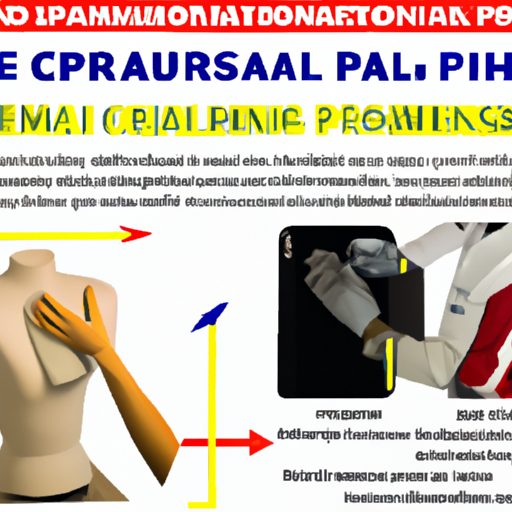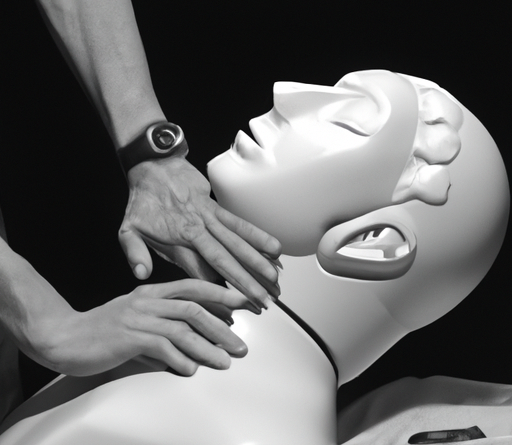
Have you ever wondered what you would do if you were faced with a situation where someone suddenly collapses and stops breathing? It’s a scary thought, but knowing how to perform CPR on adults can be a lifesaver. In this article, we’re going to discuss the steps involved in CPR and give you some helpful tips on how to properly perform it. So, whether you’re a healthcare professional or just a concerned individual, stay tuned because you’re about to learn more about this important life-saving technique.
Performing CPR on adults can be quite intimidating, but it doesn’t have to be. With the right knowledge and practice, anyone can be prepared to respond to a cardiac emergency. In this article, we’ll guide you through the step-by-step process of how to perform CPR on adults. We’ll break it down into easy-to-understand instructions and provide you with some useful tips along the way. So, whether you’re a complete beginner or simply need a refresher, this article will give you the knowledge and confidence to potentially save a life. Stay tuned for more detailed information on this essential skill.
Table of Contents
How to Perform CPR on Adults
CPR, or Cardio Pulmonary Resuscitation, is a life-saving technique that can be performed by anyone, regardless of medical training. This article will guide you through the steps on how to perform CPR on adults, which can make a significant difference in saving someone’s life during an emergency.
What is CPR?
CPR is a technique used to manually keep blood flow and oxygen circulating in the body when a person’s heart has stopped beating or they are not breathing. It involves a combination of chest compressions and rescue breaths, both of which are vital in helping to maintain vital functions while waiting for professional medical assistance.
Why is CPR important?
CPR is crucial because it can keep a person alive until more advanced medical care can be provided. When a person’s heart stops beating, the brain and other vital organs can quickly become starved of oxygen, leading to permanent damage or death. By performing CPR, you can effectively buy time until medical professionals arrive and can take over.
How does CPR work?
CPR works by providing artificial circulation and oxygenation to the body. Chest compressions help to manually pump the heart and maintain blood flow, while rescue breaths deliver oxygen to the lungs, which is carried to the rest of the body. This combined effort keeps the vital organs functioning and can increase the chances of a successful resuscitation.
When should CPR be performed?
CPR should be performed if someone is found unresponsive and not breathing normally. It is important to quickly assess the situation and determine if CPR is needed. Remember, time is of the essence, so don’t hesitate to start CPR if you suspect someone needs it.
Preparing to Perform CPR
Before starting CPR, it is essential to ensure the safety of yourself, the victim, and those around you. Follow these steps to adequately prepare before performing CPR.
Assessing the situation
First, assess the situation to ensure it is safe to approach the victim. Look for any hazards that could pose a risk to your safety, such as fire, electricity, or dangerous surroundings. If any hazards are present, address them or remove the victim from harm’s way before proceeding.
Ensuring safety measures
Once you have ensured the immediate safety of the area, it is crucial to wear personal protective equipment (PPE) if available. PPE includes gloves and masks that can protect you from potential harm or infectious diseases. If PPE is not available, continue with the CPR procedure but take precautions to maintain personal hygiene afterward.
Activating emergency services
Before starting CPR, call emergency services or instruct someone nearby to call. Provide them with a clear description of the situation, including the victim’s condition and location. You want to ensure that professional medical help is on the way while you begin CPR.
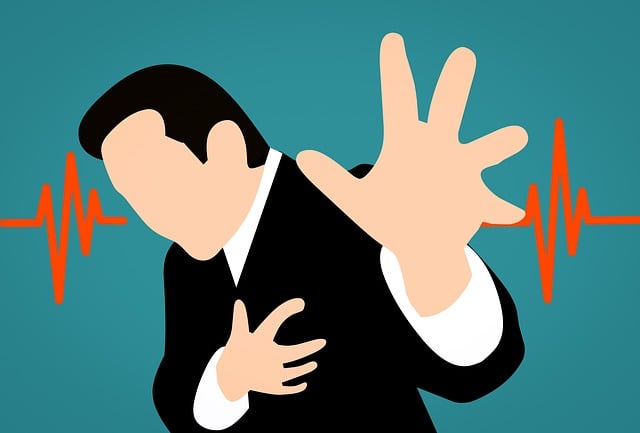
Checking for Responsiveness
After taking the necessary safety measures, it is time to assess the victim’s responsiveness. Follow these steps to determine if CPR is required.
Approaching the victim
Approach the victim and introduce yourself if time permits, although this is not necessary for performing CPR. Gently shake the victim and shout, “Are you okay?” to see if they respond. If there is no response, proceed to the next step.
Checking for consciousness
Check if the victim is conscious by tapping their shoulder firmly and asking, “Can you hear me?” While doing this, be observant of any signs of responsiveness, such as movement, eye opening, or verbal cues. If the victim shows no signs of consciousness, move on to the next step.
Determining absence of normal breathing
To determine if the victim is breathing normally, kneel beside them, and position yourself so that you can clearly observe their chest. Look, listen, and feel for any signs of breathing, such as chest rising and falling, breathing sounds, or airflow on your face. This should be done for no more than ten seconds. If the victim is not breathing or only gasping, CPR should be initiated immediately.
Performing Chest Compressions
Chest compressions are a vital part of performing CPR and help circulate blood throughout the body. Follow these steps to perform chest compressions effectively.
Positioning the victim
Position the victim on their back on a firm surface, ideally the ground. Kneel beside the victim’s chest, and ensure their upper body is exposed for easy access to their chest.
Proper hand placement
Place the heel of one hand on the center of the victim’s chest, between the nipples. Position your other hand on top, interlacing your fingers.
Applying adequate pressure
Lean forward, keeping your arms straight, and align your shoulders directly above your hands. Apply downward pressure to the chest, depressing it at least 2 inches but no more than 2.4 inches. Allow for complete chest recoil between compressions, but do not lift your hands off the chest.
Maintaining compression rate and depth
Perform compressions at a rate of 100-120 compressions per minute. This equals approximately 2 compressions per second. It may be helpful to perform compressions to the rhythm of the song “Stayin’ Alive” by the Bee Gees, as its beat matches the recommended rate. Maintain the appropriate depth and speed throughout the entire CPR process.
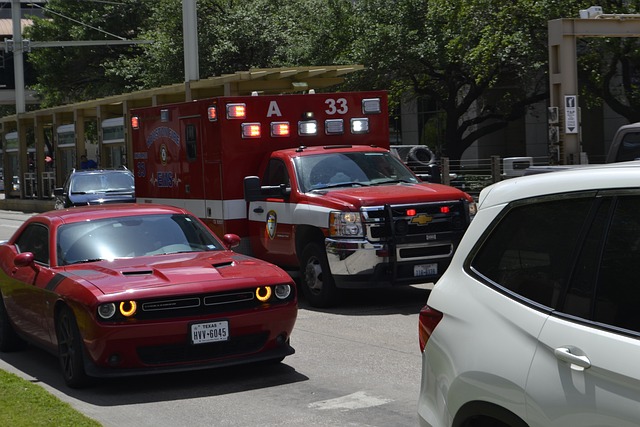
Delivering Rescue Breaths
In addition to chest compressions, rescue breaths are essential for providing oxygen to the victim’s lungs. Follow these steps to deliver rescue breaths effectively.
Clearing the airway
After performing 30 chest compressions, open the victim’s airway by tilting their head back and lifting their chin. This helps to create a straight path for air to enter the lungs. Be cautious of any neck or spinal injuries; lift the chin without flexing or extending the neck excessively.
Creating a good seal
Pinch the victim’s nose closed with your fingers. Take a normal breath, place your mouth firmly over theirs, and make a complete seal. Ensure that there is no leakage of air around the victim’s mouth.
Delivering rescue breaths effectively
Blow into the victim’s mouth in a manner that causes their chest to visibly rise. Deliver each breath over a period of about one second, and observe for chest rise. If the chest does not rise, reposition and attempt to create a better seal. Give two breaths, each lasting for about one second, then proceed with another cycle of 30 chest compressions.
Continuing CPR until Help Arrives
CPR should be continued until professional medical help arrives and takes over. Follow these steps to ensure optimal CPR performance.
Rotating rescuers, if available
Performing CPR can be physically demanding, and fatigue can affect the efficiency of chest compressions. If there are other capable individuals present, consider rotating rescuers every two minutes to maintain effective CPR.
Monitoring the victim’s response
While performing CPR, monitor the victim for any signs of responsiveness or spontaneous breathing. Vigilantly observe their body for any changes or signs of improvement. Remember, if the victim starts to show signs of responsiveness or begins breathing on their own, CPR can be stopped.
Knowing when to stop CPR
CPR can be physically and emotionally taxing, especially if there is no sign of improvement in the victim’s condition. Continue CPR until advanced medical help arrives or if you are too exhausted to continue. If professional medical responders determine that further resuscitation efforts are futile, they will make the call to stop CPR.

Special Considerations for Adult CPR
When performing CPR on adults, it is important to consider their gender and body type. Make the following adaptations to ensure effective compressions and breaths.
Accounting for gender and body type
For victims with larger chests, it may be necessary to use more force when performing compressions or adjust hand placement slightly to ensure optimal depth. For females, be mindful of any breast tissue and adjust hand placement accordingly, ensuring that compressions are performed over the lower half of the sternum.
Adapting compression and breath techniques
If the victim’s chest does not rise adequately during rescue breaths, reposition their head and make a better seal. Adjust the pressure or volume of your breaths as necessary to ensure effective ventilation. Adapting these techniques based on the victim’s response can help increase the chances of a successful resuscitation.
Common CPR Mistakes to Avoid
When performing CPR, avoid these common mistakes that can impede its effectiveness:
Overwhelmed rescuer response
In stressful situations, it is easy to become overwhelmed and freeze. Remember to stay calm and follow the necessary steps for CPR. If you feel overwhelmed, take a moment to collect yourself and refocus on the task at hand.
Improper hand placement and compression depth
Proper hand placement and compression depth are critical for effective chest compressions. Ensure that your hands are positioned correctly, and apply adequate pressure to achieve the recommended depth. This will maximize the effectiveness of the compressions and maintain blood flow.
Inadequate rescue breaths
Delivering rescue breaths with insufficient volume or at an incorrect rate can limit the amount of oxygen reaching the victim’s lungs. Ensure a good seal and provide breaths that are deep enough to visibly inflate the victim’s chest.
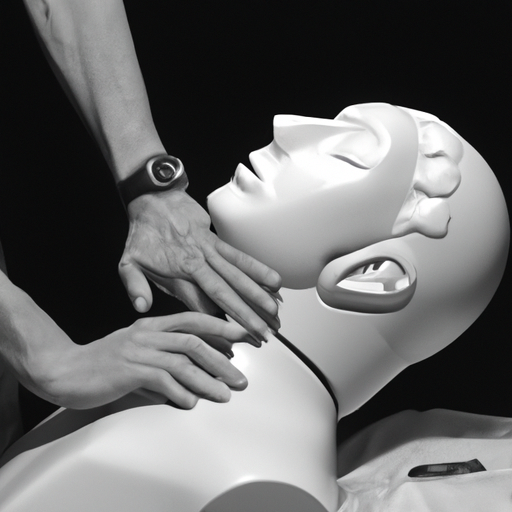
Reviewing CPR Certification Guidelines
To become proficient in performing CPR, it is recommended to undergo CPR certification. CPR certification courses teach you the necessary skills and techniques to effectively perform CPR on both adults and other age groups. Here are some guidelines to consider:
Certification requirements
Certification requirements may vary depending on the organization or region. Typically, you will need to complete both a theoretical and practical examination to obtain certification. The theoretical component often involves studying various CPR techniques, while the practical component involves demonstrating proficiency in performing CPR on manikins.
Renewal procedures
CPR certification usually expires after a certain period, typically every two years. To renew your certification, you will need to complete a refresher course and pass a recertification exam. Keeping your certification up to date ensures that you are knowledgeable about the latest CPR techniques and enables you to respond effectively in emergency situations.
Additional training options
In addition to CPR certification, there are other first aid and emergency response courses available that can enhance your skills and knowledge. These courses cover topics such as automated external defibrillator (AED) use, basic life support (BLS), and advanced cardiac life support (ACLS). Taking these courses can further prepare you to respond to various emergencies effectively.
Conclusion
Knowing how to perform CPR on adults is a valuable skill that can potentially save lives. Remember to assess the situation, ensure safety measures, and activate emergency services before proceeding with CPR. Through proper chest compressions and rescue breaths, you can provide vital circulation and oxygenation while waiting for professional medical assistance. Regularly reviewing CPR certification guidelines and avoiding common mistakes will ensure that you are equipped with the knowledge to respond effectively in emergencies. By mastering the essential steps and techniques outlined in this article, you have the power to make a significant difference in someone’s life during a critical moment.
